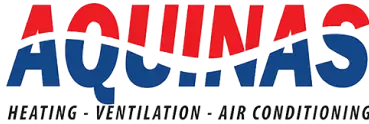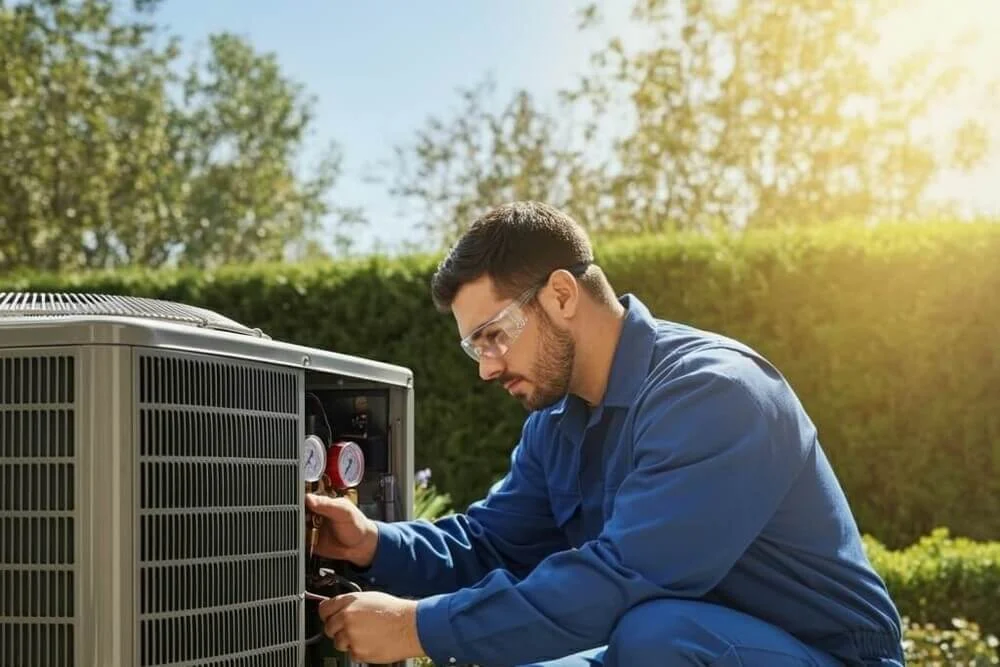Is Spring is the Best Time to Handle HVAC Maintenance and Repairs in Apartment Buildings?
What California Property Managers Should Consider Before Peak Season Hits
For apartment building managers, few systems are as critical to tenant comfort and retention as the HVAC system. With California’s scorching summers—especially in areas like Los Angeles, Orange County, San Diego, and the Bay Area—HVAC units are pushed to their limits. Ensuring these systems operate efficiently can make the difference between positive reviews and emergency repair calls.
But when’s the right time to handle Multi-Family HVAC maintenance and repairs? Is spring really the best time for HVAC repairs?
In this article, we’ll explore why timing matters, the unique challenges of multi-family properties, and the seasonal pros and cons. We’ll look at how spring maintenance can improve tenant satisfaction, reduce costs, and keep your property running smoothly before the first heatwave hits.
Why Timing Matters in Multi-Family HVAC
Unlike single-family homes, HVAC systems in apartment buildings face near-constant use. From shared ducting to aging rooftop units, multi-family HVAC systems endure significant strain. Over time, this leads to wear and performance decline
Relying on reactive maintenance—waiting until tenants complain—can be costly. Proactive HVAC planning ensures fewer breakdowns, better air quality, and happier residents.
What’s at stake? Everything from lease renewals to online reviews. Delayed repairs or poor performance during peak heat can lead to negative feedback, increased turnover, and rising operational costs.
The Case for Spring Being the Best Time for HVAC Repairs & Maintenance
Easier Scheduling and Faster Response Times
Spring is considered a “shoulder season” in the HVAC industry. With fewer emergency calls coming in, vendors have greater flexibility. That means faster response times, easier scheduling, and access to your preferred technicians.
Compared to the summer crunch, when response times can stretch into days, spring provides a window for calm, deliberate service without the urgency premium.
Prepare for the First Heatwave
HVAC systems are most likely to fail during their first high-demand cycle after months of light use. This is especially common during early summer heatwaves in Southern California.
Spring HVAC maintenance allows your techs to identify refrigerant leaks, clogged coils, or failing capacitors before they result in tenant discomfort and middle-of-the-night calls.
Improved Tenant Satisfaction and Fewer Complaints
When A/C fails in July, it’s not just an inconvenience—it’s a serious tenant relations issue. From service tickets to online complaints and even rent withholding disputes, the consequences can escalate quickly.
By addressing potential issues in spring, you protect your reputation and minimize disruptions. Proactive upkeep boosts tenant trust and satisfaction, especially when supported by clear communication.
Cost Efficiency
Emergency repairs typically come with premium charges—higher hourly rates, overtime fees, and increased parts demand. Spring maintenance is not only more available but often cheaper.
Investing in proactive service reduces the likelihood of costly breakdowns, preserves system lifespan, and stabilizes your annual HVAC budget.
Reduced Downtime and Disruption
Spring’s milder temperatures allow maintenance work to be completed with minimal tenant impact. Residents are less likely to notice short HVAC shutdowns, and technicians can work comfortably without the urgency of cooling demands.
Avoiding service disruptions in the heat of summer also helps prevent stress-related tenant dissatisfaction.
What About Winter or Fall?
There’s a strong argument for conducting major HVAC upgrades during winter, when systems are under the least demand. Replacing rooftop units or performing ductwork is often easier during the cold season.
However, the risk is timing. Many property managers discover system problems during summer—but don’t act until it’s too late. Spring offers the ideal balance: moderate weather, lighter scheduling demand, and enough time before the peak heat hits.
What Maintenance Should Be Done in Spring?
Spring is perfect for system checkups and performance optimization. Here’s a seasonal maintenance checklist apartment managers should review with their HVAC partner:
For best results, document each inspection and service for compliance records and future reference. Maintenance logs also support warranty claims and help demonstrate due diligence if tenant disputes arise.
For a deeper dive into maintenance planning, check out our guide: Simplify HVAC Maintenance: A Guide for California Property Managers.

Regional Considerations: What California Apartment Managers Should Know
California isn’t a one-size-fits-all HVAC market. From the foggy coastlines of the Bay Area to the inland heat of Riverside County, every region—and sometimes every zip code—presents its own HVAC challenges. For apartment managers, this means spring maintenance isn’t just about timing—it’s about tailoring service to the building’s local climate demands.
To explore how climate variability affects HVAC performance across the state, read our article on How to Maximize HVAC Efficiency in California’s Microclimates.
Bay Area HVAC: Navigating Microclimates and Surprise Heatwaves
While the Bay Area is often seen as temperate, local apartment managers know that comfort demands vary drastically by location. San Francisco may stay cool year-round, but just a few miles inland in places like Concord, Walnut Creek, and San Jose, spring can bring dry, 85–90°F days seemingly out of nowhere.
These sudden warmups catch undermaintained systems off guard. Spring is the smart time to inspect and prep equipment, especially in areas with older infrastructure or buildings with minimal insulation. Catching airflow issues, refrigerant leaks, or dirty coils now helps ensure consistent tenant comfort when those first heat spikes hit.
Los Angeles & Orange County: Spring Heat Arrives Early—Be Ready
Southern California has two very different HVAC zones: the coastal band and the hotter inland sprawl. Apartment managers in Long Beach or Santa Monica may get a longer cooling-off period—but move just a bit inland to Santa Ana, Fullerton, or Whittier, and spring heatwaves come fast and hard.
Spring HVAC maintenance is crucial here. These regions see air conditioning units kick on in late March or April, and tenants are quick to report any dip in performance. With many buildings relying on rooftop units or aging split systems, proactive inspections can help avoid mid-summer meltdowns, skyrocketing service tickets, or lease disputes.
San Diego County: One County, Multiple Climate Zones
San Diego is famous for its “perfect weather,” but property managers know it’s far from uniform. The coastal neighborhoods of Pacific Beach or Point Loma may only need light A/C, while inland zones like El Cajon, Poway, or Escondido often face 90°F+ days as early as May.
East County properties especially demand early HVAC prep. Systems face intense use with little marine influence to cool things down. And in the foothill or high desert areas—like Alpine or Ramona—temperature swings and dry air strain compressors and ductwork.
Spring is the best time to adjust systems for these diverse conditions. Whether it’s prepping coastal systems for humidity or inland units for serious cooling, regional tuning can prevent tenant complaints and costly service calls.
No Matter the Region, Tenants Have Low Tolerance for HVAC Issues
No matter where your building is located, tenant expectations are consistently high across California. Apartment renters demand reliable air conditioning and fast response times when things go wrong. Poor HVAC performance during the first warm days of the year can directly impact online reviews, lease renewals, and even rent collection.
Many California residents—especially those in traditionally mild coastal areas—aren’t accustomed to prolonged heatwaves or high indoor temperatures. When A/C fails, discomfort sets in fast, and patience runs out quickly.
Spring offers a strategic window to get ahead—HVAC contractors have more availability, service is faster, and pricing is often more favorable. For multi-family property owners, it’s a smart investment in tenant satisfaction and long-term operational stability.
Final Takeaway: Is Spring the Right Time for You?
For most California apartment buildings, spring is the best time for HVAC repairs and preventive maintenance. It strikes the right balance between system demands, technician availability, and tenant comfort expectations.
Every property is different, but waiting until the first summer issue can be a costly mistake. By planning ahead, you position your property with optimum cooling services for a smoother, more profitable summer.
Spring maintenance also helps protect your long-term investment. Proactively identifying small issues—like worn belts, clogged filters, or low refrigerant levels—prevents those problems from becoming major, system-wide failures during a heatwave. And in a state like California, where tenants often expect hotel-level comfort and fast resolutions, staying ahead of HVAC problems is part of maintaining your brand and your bottom line.
If you manage properties across different climate zones—whether in San Diego’s East County, inland Orange County, or the warmer pockets of the Bay Area—customizing your maintenance schedule to local conditions is critical. Spring is your opportunity to tune systems for region-specific demands before peak season hits.
In short, spring HVAC maintenance isn’t just about preventing problems. It’s about delivering consistent tenant satisfaction, reducing long-term costs, and staying competitive in California’s high-expectation rental market. Don’t wait for the first complaint—take control before the summer heat arrives.

